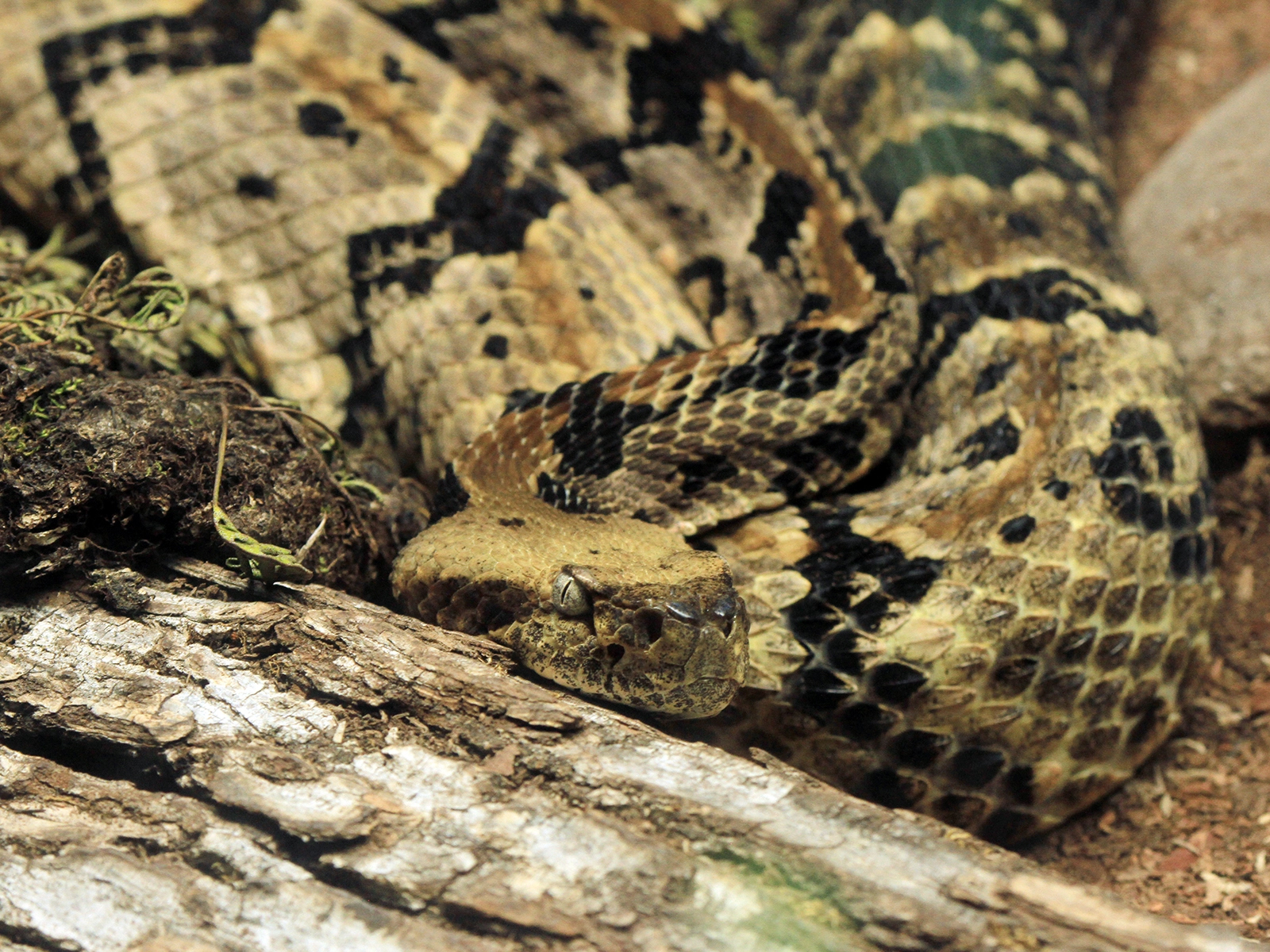Canebrake Rattlesnake
Crotalus horridus
Also called timber rattlesnakes.
Class
Reptilia
Order
Squamata
Family
Viperidae

Also called timber rattlesnakes.
Reptilia
Squamata
Viperidae
Northern Florida and west central U.S. to Texas
Length: Up to 75 in
Weight: Avg. 5 lbs
Dense thickets, cane fields, and rocky hills
4 - 17 live young
Birds, small mammals, reptiles, and insects
Least Concern
These venomous snakes puncture the skin with two fangs that fold back up into the roof of its mouth when closed. The venom is made of complex proteins that enters the bloodstream and destroys blood cells and tissues.
This snake is not especially aggressive and will retreat rather than fight. If it cannot escape, it may vibrate its rattle (at the end of the tail) and strike repeatedly with its mouth either opened or closed. The rattle is a series of hard segments made of keratin.
In some parts of their range, canebrake rattlesnakes are solitary and will hibernate alone in a stump hole or under ground cover. In other parts of their range, they congregate in dens underneath rocks, fissures in rocky ledges or other crevices.